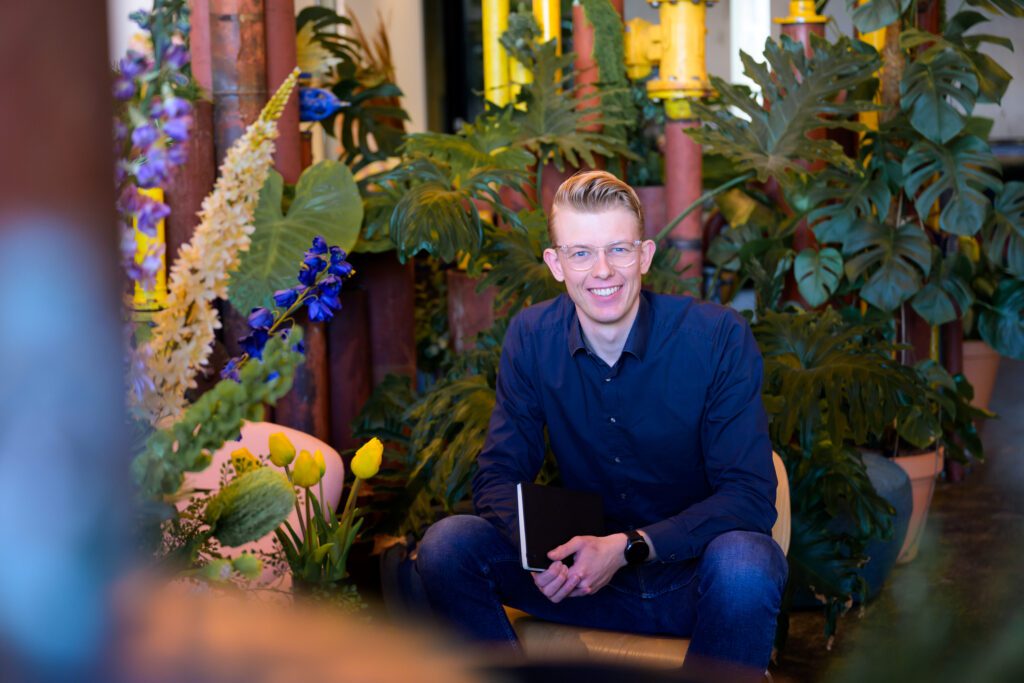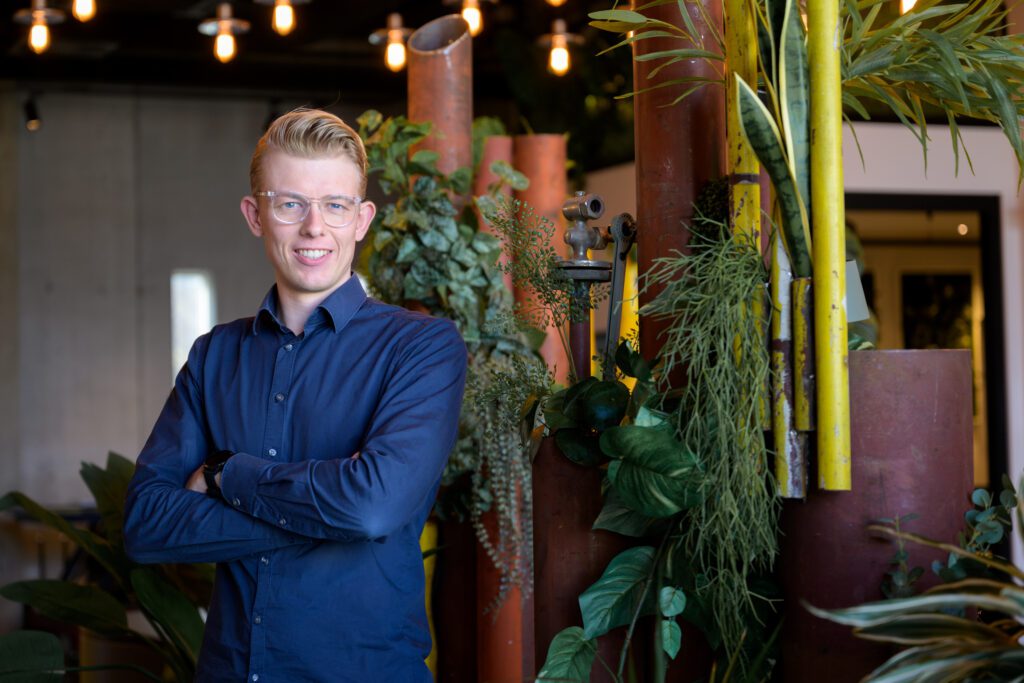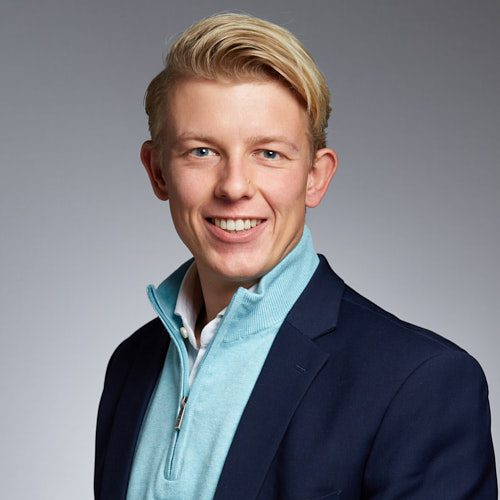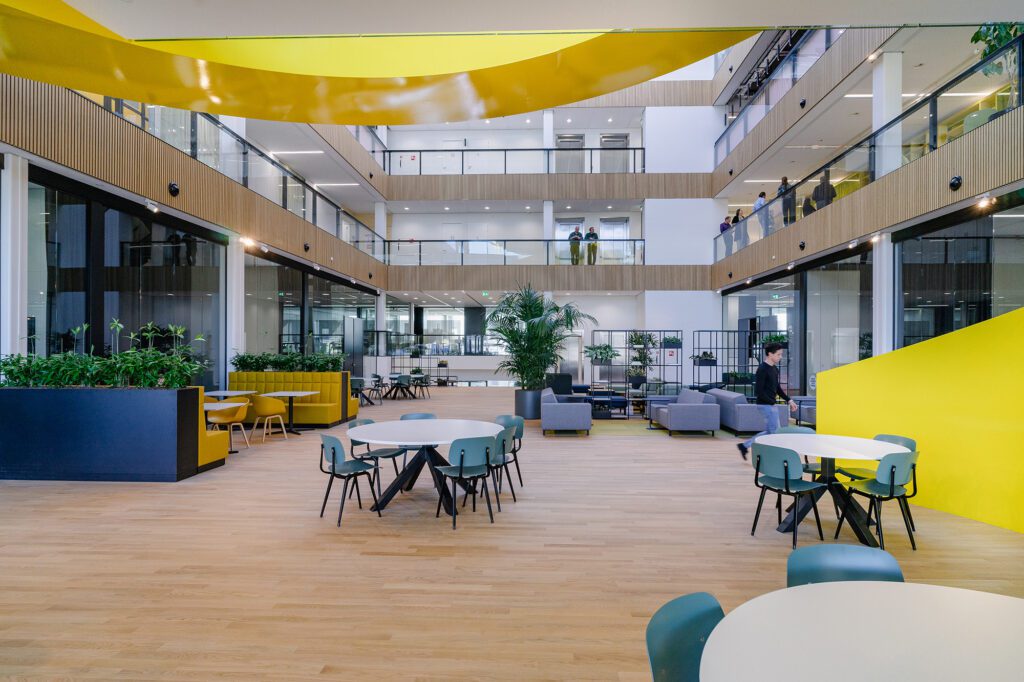In Amstelveen, AM is working on the Hollandse Meesters project. It's a sustainable building with over 300 apartments for sale and rent, along with commercial space. The building consists of two separate sections for sale and rent, each with 15 and 17 floors respectively, and a partially underground parking garage. Just as the paintings of Dutch masters are unique, this building also has something unique about it. It is the first residential building in the Netherlands developed according to the WELL guidelines, making it a pioneer! WELL is an international certification method for the health and well-being of buildings. Robin Meijer, project developer at AM, explains what it takes to meet the WELL standard.
AM does it WELL

The International WELL Building Institute (IWBI) is a globally operating organization that evaluates buildings in terms of health and well-being. Robin explains: "IWBI has researched which elements of a building contribute to this. The quality of air, light, and water is measurable. The design of a building can encourage movement, provide energy, foster connection, inspire, and even promote a good night's sleep. IWBI has translated all this knowledge into a practical scoring system, focused on the health of the user. A list of various points on which you can promote the health and well-being of the residents in the building."
Making it tangible
The WELL certification was previously only available for offices. For example, the AM office in Utrecht is WELL-certified, and most offices developed by AM also adhere to this standard. However, applying the WELL standard to residential buildings is entirely new. Both AM and the tenant of the rental apartments, Redevco, were motivated to pursue the WELL certification for the Hollandse Meesters project.
Robin explains, "It aligns with our company philosophy. 'Design for wellbeing' is one of our three impact themes. As a developer, we have an impact on the future of the Netherlands. We see it as our responsibility to create areas where people can thrive and promote an active lifestyle. By obtaining a certification like WELL, we demonstrate that we not only talk about this but also put it into practice. That makes it tangible."
Initially, applying a certification methodology designed for offices to a residential building posed a significant challenge. Robin continues, "Towards the end of last year, IWBI announced to us that they wanted to start with the WELL for Residential program. This was perfect timing because it meant that the assessment points were already tailored to residential buildings, and we could immediately start working with them. The list of criteria for scoring points includes factors such as light, air, and water quality, proximity to amenities like playgrounds, walking and cycling paths, or public transportation hubs, as well as access to green spaces. By committing to the WELL for Residential program, Hollandse Meesters becomes the very first residential building in the Netherlands to be developed according to these WELL guidelines and one of the first projects worldwide. We are incredibly proud of this achievement and hope that many buildings will follow suit."
We see it as our responsibility to create areas where people can thrive and promote an active lifestyle.
All parties included in the process
"A list of assessment criteria may sound simple, but it's not that straightforward," explains Robin. "For every aspect of the building, there are WELL requirements. To score enough points, everyone needs to cooperate and contribute, from the interior designer to the installation consultant, from the architect and interior designer to the builder, and of course, Redevco." According to Robin, it's crucial to get everyone on the same page. "It's new for everyone involved. That's why we involve all parties in the process right from the start. We explain what we're doing and why we're doing it. Fortunately, our partners and the contractor are eager to develop in this area and are willing to work things out with us. Ultimately, we need to assess together whether each requirement on the list is feasible because some points are challenging or even unattainable. For other points, it's about making trade-offs: for example, for one specific air quality requirement, you can score a maximum of four points, but this would require extensive adjustments to the ventilation system. The WELL requirements are structured in a way that with less significant adjustments, you still contribute to the quality, but you don't get the maximum points. So, we work through everything with our partners and continually assess to achieve the best possible outcome."

A significant difference for the resident
Besides implementing various technical aspects in the building, a green area has been designed for Hollandse Meesters, including an inner courtyard and a rooftop garden on the sixth floor. These gardens are accessible to all residents. "In this way, we are achieving positive aspects throughout the building that together make a significant difference for the residents," Robin emphasizes that he cannot yet say with certainty whether the building will actually receive the WELL certification. "Construction is about to begin, so everything is planned out, but some aspects will only be confirmed at the completion. At that point, we'll check whether factors like air and water quality indeed meet the intended standards. Until then, we cannot guarantee 100% that the building will receive the WELL certification, but we are doing everything in our preparation to achieve it!"
Making an impact in future projects
Robin is personally driven to continue making an impact in his work in the field of health: "I am a sporty person, and I believe that being physically and mentally healthy is the foundation of everything you do. I find it rewarding to contribute to this in my work and to be involved in thinking about it." The experience Robin gains from the development of this project is of great value for future projects. "The next time AM develops a residential building according to the WELL guidelines, we will benefit from everything we have already researched. I am happy to share that knowledge with my colleagues."

